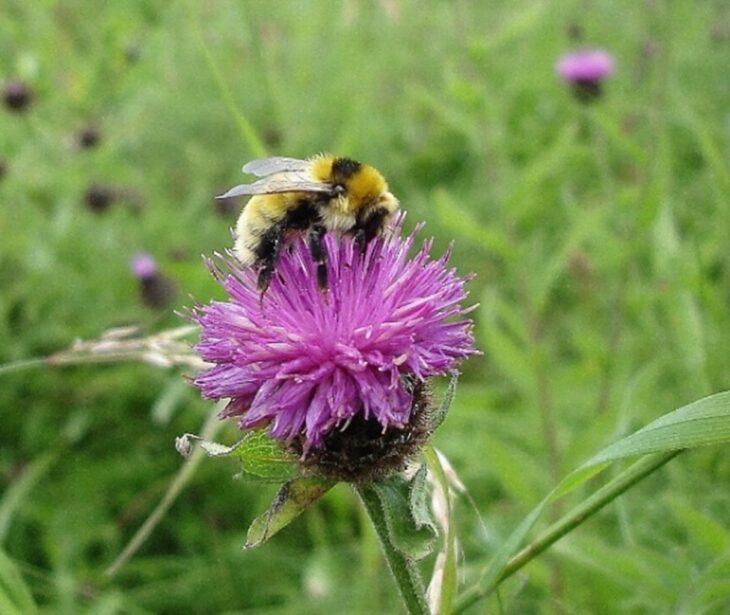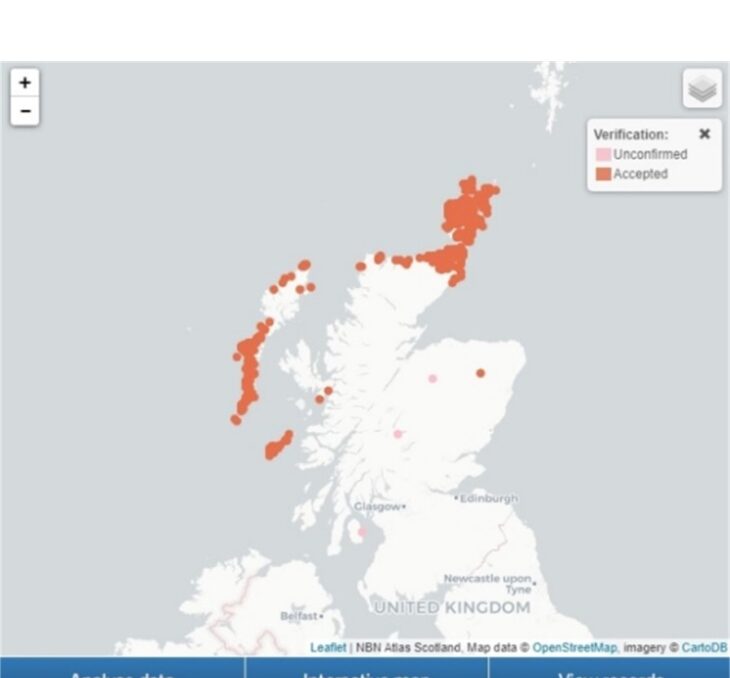About us
Importance of local recording for conservation projects
The importance of local recording for conservation of the Great Yellow Bumblebee

A species conservation project in the north of Scotland provides a great example of what may be achieved by mobilising biodiversity records collected locally and making them available nationally to researchers and conservationists. This is one of the key aims of the Better Biodiversity Data (BBD) project.
The Great Yellow Bumblebee Bombus distinguendus is a very scarce bumblebee now found only in the far north and northwest of the Scottish mainland, Orkney and some of the Hebridean islands. The Species on the Edge Project (SotE) is working to secure its future in these areas.
SotE is a multi-partner species conservation programme dedicated to working with communities across Scotland’s coasts and islands to help them secure a future for their vulnerable and threatened local wildlife such as the Great Yellow Bumblebee. It is funded by The National Lottery Heritage Fund. Data on the species collected in Orkney was vital to the planning of the project, part of which was forming the Orkney B-line route (an important Buglife initiative which helps connect up habitats).
John Crossley has been Orkney’s local recorder for bees, wasps and ants for the last 25 years and also leads the newly formed Orkney Wildlife Recording Group (OWRG). Records of bumblebee sightings from anyone in Orkney are collected and verified by John, then submitted to OWRG and made openly available on the National Biodiversity Network Atlas (NBN Atlas). OWRG is a full partner in the BBD project.

Without local recorders there would be no focussed conservation effort or SotE project directed at Great Yellow Bumblebees. As John says: “Prior to 1998 when I started recording Great Yellow Bumblebees in Orkney, there was a total of just a dozen records for the county between 1912 and 1995; by 2023 there were nearly 1000 records involving c.4500 individual bees, all sent to the NBN Atlas”.
SotE staff and volunteers are now regularly surveying in known Great Yellow Bumblebee hot spots from John’s data and are now collecting additional survey data (using Bumblebee Conservation Trust’s national recording programme). SotE Orkney team also shares its BeeWalk data with John along with any other ad-hoc sightings from their team. Records continue to be added by John to what is now a long-term dataset.
This biodiversity data story was shared by Orkney Wildlife Recording Group and the Species on the Edge Orkney team with the Better Biodiversity Data project, led and managed by the NBN Trust and supported by NatureScot and The Scottish Government.

